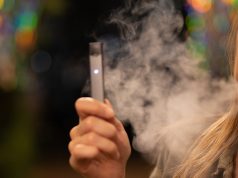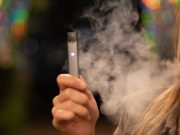Vaping has been banned at the University of Arizona since 2014, despite the fact that other smoking cessation aids such as nicotine patches and nasal sprays are still allowed. Similarly, the Northern Arizona University implemented a vaping ban in 2016.
Following suit is the Arizona State University (ASU), where the impending vaping ban will go into effect as of the 1st of July. This campus enacted its tobacco ban in 2013, but since vaping was not as common at the time, it was not included in the ban.
However earlier this week, ASU said that since it’s receiving increased complaints about vaping activity on campus, it has decided to add e-cigarettes to the list of banned nicotine products. The University added that this decision is based on recent research indicating that the devices are not safer alternatives to cigarettes.
Inaccurately comparing second hand vapour to second hand smoke
Toxic substances found in (e-cigarettes) aerosol are of quantities that are insignificant to our health, and can in no way be compared to the amounts found in tobacco smoke.
The research the University could be referring to, is one which was released by local researchers earlier this year, wrongly stating that the issue of second hand vapour is the same as that of secondhand smoke. “So, it’s the same issue with secondhand smoke that secondhand vapor contains all the same chemicals as if you were vaping yourself, just as secondhand smoke contains all of the same chemicals as if you were smoking yourself,” said Judith Gordon a professor and interim associate dean for Research in the UA College of Nursing, who was on the E-Cigarette Policy Review Taskforce.
Gordon claims that while smoke from regular cigarettes goes up and out once released, the vapour from e-cigarettes is heavier than the air and sinks to the ground. She added that this can cause problems for families with children and pets who are lower to the ground where the vapor is settling.
She also referred to a study from UC Riverside, which found metal and some other particles in e-liquids and the aerosol it produces. “I think there’s a lot of misperceptions around vaping — that it’s harmless. And the more we learn about it and the more we know and the more that we can educate people who are vaping about the potential harms to themselves and others of the product,” said Gordon.
Toxin levels found in e-cig vapour are insignificant to our health
Meanwhile, renowned anti-smoking expert and researcher Dr. Konstantinos Farsalinos and other public health experts have long explained that any such toxic substances found in aerosol are of quantities that are insignificant to our health, and can in no way be compared to the amounts found in tobacco smoke.













